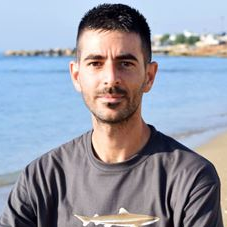The 10th Anniversary of JMSE - Recent Advances in Section Marine Biology
A special issue of Journal of Marine Science and Engineering (ISSN 2077-1312). This special issue belongs to the section "Marine Biology".
Deadline for manuscript submissions: closed (31 December 2023) | Viewed by 23518
Special Issue Editor
Interests: marine biology; conservation biology; fish ecology and taxonomy; fishery research; biological invasions
Special Issues, Collections and Topics in MDPI journals
Special Issue Information
Dear Colleagues,
As Editor-in-Chief of the Section Marine Biology of JMSE, I am pleased to invite you to submit high-quality and relevant manuscripts on your research activities in marine biology for this special occasion in the Special Issue entitled “The 10th Anniversary of JMSE - Recent Advances in Section Marine Biology”. All research will be included in a book dedicated to the 10th anniversary of our journal. Manuscripts focusing on all the different main fields of marine biology are welcome: biology and ecology of marine organisms, conservation and management of marine species, pollution in the marine environment and bioindicators, biological invasions in the marine environment, taxonomy of marine organisms, fisheries research.
Dr. Francesco Tiralongo
Guest Editor
Manuscript Submission Information
Manuscripts should be submitted online at www.mdpi.com by registering and logging in to this website. Once you are registered, click here to go to the submission form. Manuscripts can be submitted until the deadline. All submissions that pass pre-check are peer-reviewed. Accepted papers will be published continuously in the journal (as soon as accepted) and will be listed together on the special issue website. Research articles, review articles as well as short communications are invited. For planned papers, a title and short abstract (about 100 words) can be sent to the Editorial Office for announcement on this website.
Submitted manuscripts should not have been published previously, nor be under consideration for publication elsewhere (except conference proceedings papers). All manuscripts are thoroughly refereed through a single-blind peer-review process. A guide for authors and other relevant information for submission of manuscripts is available on the Instructions for Authors page. Journal of Marine Science and Engineering is an international peer-reviewed open access monthly journal published by MDPI.
Please visit the Instructions for Authors page before submitting a manuscript. The Article Processing Charge (APC) for publication in this open access journal is 2600 CHF (Swiss Francs). Submitted papers should be well formatted and use good English. Authors may use MDPI's English editing service prior to publication or during author revisions.
Keywords
- marine biology
- marine ecology
- species conservation
- marine pollution
- biological invasions
- taxonomy
- fishery
- marine species





